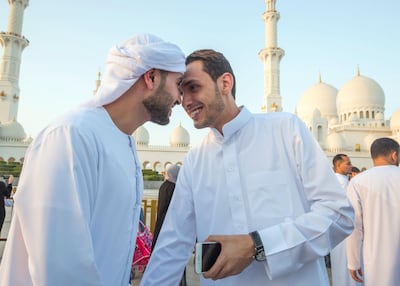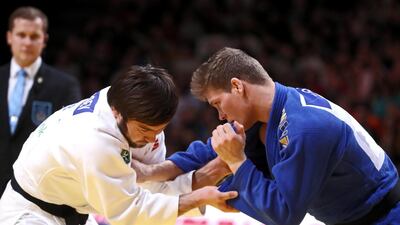Last weekend, I helped my mother clean up the attic of our family house in the south of France. Hidden behind a pile of boxes was a cardboard tube containing posters that were pinned on my bedroom wall until I left for college.
One of them is a portrait of a man you are unlikely to have heard of: Bernard Tchoullouyan, a 1981 judo world champion and bronze medalist at the 1980 Moscow Olympics.
It was an emotional find. My brain instantly sent me back to Marseille in the early-1990s, when Tchoullouyan became my judo sensei – the Japanese term for a martial arts master and instructor. Early on in my training, I became fascinated by the magical quality of his hands. One of the proudest moments of my life remains the one in which those hands handed me my black belt.
But, like many others who have sparred with Tchoullouyan, I have painful memories of those hands, too. At the start of a fight, it was like he was barely touching you at all. Then suddenly, out of nowhere, you would feel the most powerful grip, followed by a light-speed throw and the agony of landing heavily on your back.
From time to time, Tchoullouyan made his students train blindfolded. “Your hands are your eyes,” he often said, because in judo your opponent is too close for vision to be your main source of information. I learned this the hard way after being defeated in mere seconds by a blind judo fighter back in the day.
A neuroscientific study of blind people conducted a decade ago revealed that orienting one’s hand movements during the act of reaching is not supported by vision, but rather by another sensory channel called proprioception, often referred to by scientists as the “true sixth sense”. Together with vision, hearing, touch, taste and smell, proprioception allows us to perceive our own position and movements. This is made possible by body sensors that provide information about the angles, tension and length of our muscles and joints.
It is proprioception that allows us to type on the keyboards of our computers or play a musical instrument without looking. When dancing or engaged in judo, proprioception allows the hands, arms, shoulders and other parts of the body to read the movements and, at times, even the intentions of someone else.
Researchers from England and Italy published a study in Neuropsychologia in which blindfolded participants being touched on the forearm or hands were able to identify the emotions and intentions of the person touching them. This could very well be how a judo competitor can feel the fear or determination of his or her opponent without having to look at their face.
But the magic of Tchoullouyan’s hands extended beyond an exceptional reading of the mind of the person he was wrestling. When he spoke to you, he would often stand by your side, not looking at you, with one hand on your shoulder. It instantly made you feel calmer, even understood.
There is more still to the power of touch, as illustrated by a study published in the Proceedings of the National Academy of Science (PNAS) in the US. Researchers used a technology called hyper-scan electro-encephalography, which allows recording the brain activity of several individuals simultaneously. One person was holding the hand of his or her romantic partner, while the latter was administered pain in a controlled fashion. The idea for this experiment came as one of the scientists was holding his wife’s hand as she gave birth to their child.

The researchers found that the level of brain-to-brain synchrony between partners as they held hands was positively correlated with the magnitude of pain relief measured in the brain of the partner experiencing the pain. One hypothesis is that the very act of touching increases coupling through connections between two individuals’ brains, enhancing the perception of empathy – the feeling of being understood. In other words, being touched by an empathetic partner helps to relieve pain – and the higher the degree of empathy, the more the pain eases. The phenomenon is known as "social analgesic", and it is something that nurses and caregivers have known, and been practising for centuries with people suffering.
"Physical touch, empathy and affective connections between humans are crucial for the social analgesic effect to happen," says Dr Guillaume Dumas, a social neuroscientist at the Human Genetics & Cognitive Functions Laboratory at the Pasteur Institute in Paris, who co-authored the PNAS study. "Despite a lot of interest in social robots and avatars to replace caregivers, they are not yet at a level where human physical presence and touch can be replaced to relief pain. A genuine realistic human-machine bonding through artificial empathy is still to be developed." So, there is much to say about the power of touch in its ability to convey intentions, emotions and also social support.
I experienced this power myself when Tchoullouyan passed away last year. At his funeral, as I joined my judo friends in giving him a last goodbye, we all held hands in silence. There was no need to look at one another’s faces. We knew we were here to support each other. And, for a moment, the magic of their hands made the sadness I was feeling just a little easier to bear.
Professor Olivier Oullier is the president of Emotiv and a neuroscientist and a DJ


